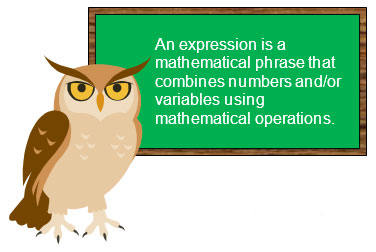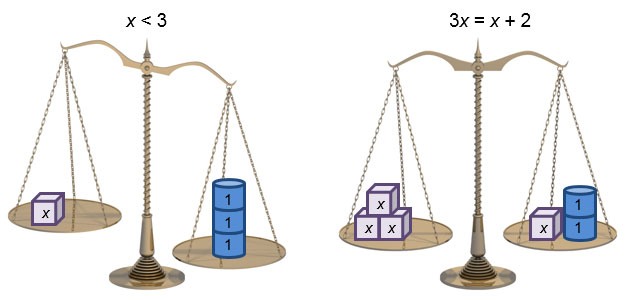

In mathematics, you will frequently study the relationships among sets of numbers and variables. Many of these relationships can be generalized using an expression that relates numbers and variables using mathematical operations, such as addition or multiplication.
Sometimes, expressions are related to each other. One expression can have a value that is less than or greater than another expression. One expression can have a value that is the same as another expression. In that case, you can say that the expressions are equivalent.
In science laboratories, you can use a balance scale to compare the masses of two substances. A balance scale is a useful representation for comparing the values of expressions. For example, the figure below shows how on the left-hand scale, x is less than 3 because the three unit blocks have a larger value than the one x-block, causing the scale to be unbalanced. Likewise, on the right-hand scale, three x-blocks have the same value as one x-block and 2 unit blocks, causing the scale to be balanced.

Source: Toby Hudson, Brass scales with flat trays, Wikimedia Commons
Toby Hudson, Brass scales with flat trays balanced, Wikimedia Commons
In this lesson, you will investigate different ways to determine whether or not two expressions are equivalent. You will use representations of concrete objects, pictorial models, and properties of algebra in order to make your comparisons.